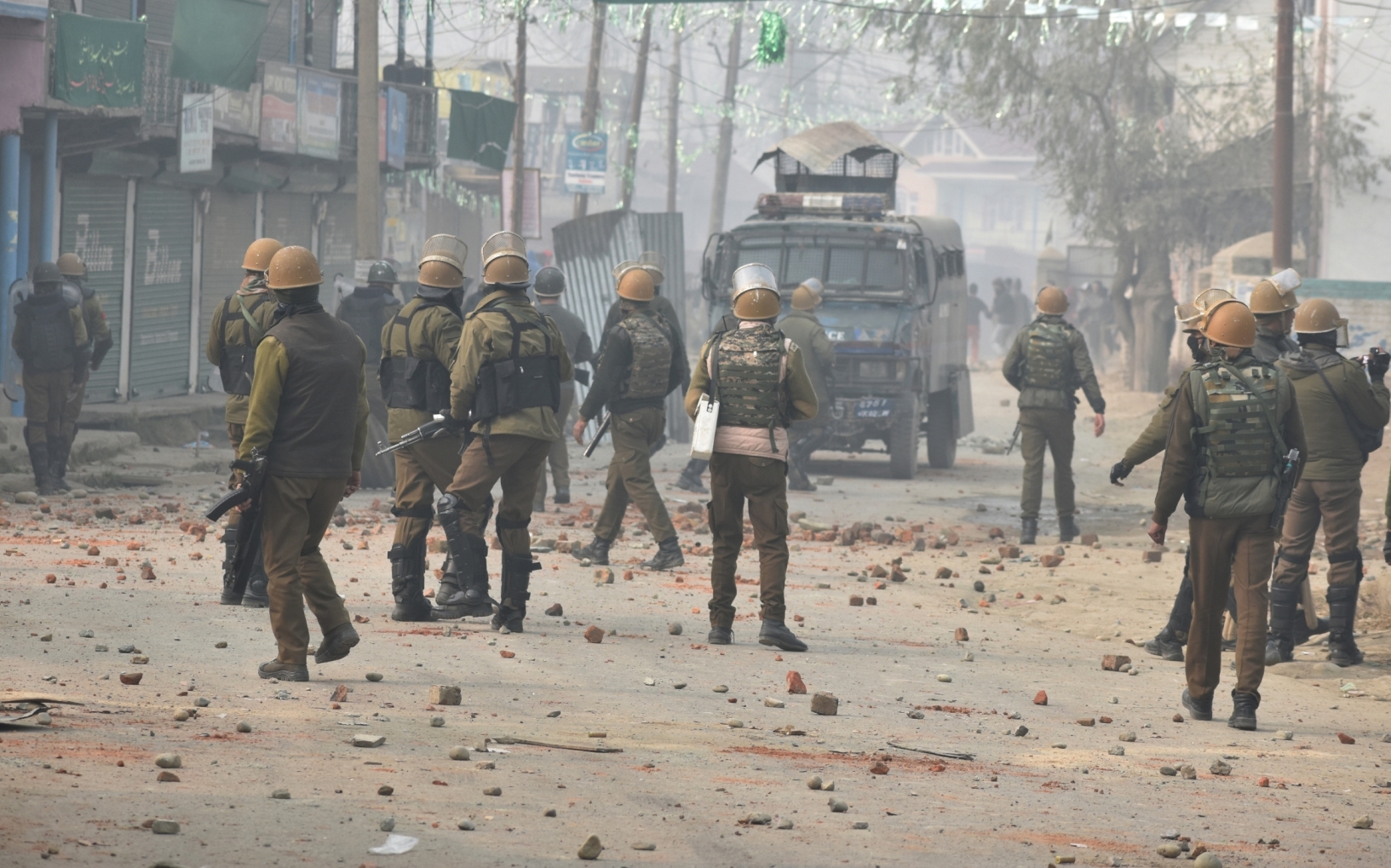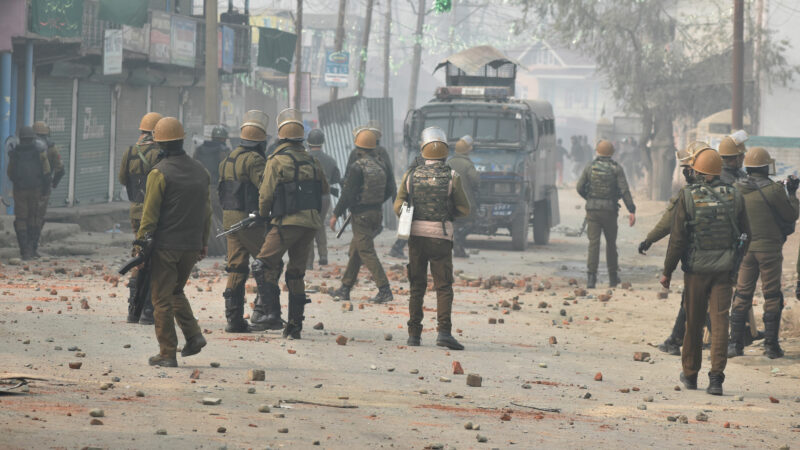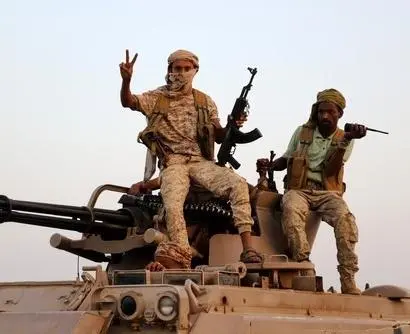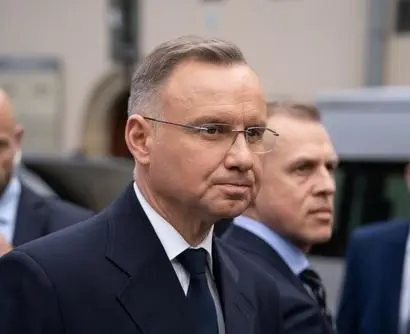Abstract: As the character of warfare has been evolving and entering the cognitive domain, popular perceptions through targeted perception management campaigns have become a significant determinant of political fallouts on the ground. This is not restricted to any region; it is a phenomenon that defines conflicts globally. Critical analyses of international conflicts are signifiers of a rational global community based on principles of justice and preservation of human rights. However, given that popular perceptions often emerge from targeted propaganda operations, the factual authenticity and comprehensive examination of convoluted histories stand neglected.
Problem statement: How to assess the impact of disinformation and misinformation campaigns, especially with the popularization of social media platforms and a systematic mythologization of the history, legal status, demography, identity, and security situations, on popular perceptions, particularly in the context of the Jammu and Kashmir discourse?
Bottom-line-up-front: The interests and interference of India’s western neighbour further complicates this situation in the security (proxy wars through cross-border terrorism) as well as information domain (primarily through the DG-ISPR under the Inter-Services Intelligence).
So what?: In the interest of upholding rationality and just principles, demythologization of this discourse becomes an urgent necessity – for India and the global community. This shall require concerted efforts by the Government of India in terms of its counter-disinformation campaigns as well as information drives to keep the national and international community better informed. However, the primary responsibility shall be shouldered by the victims of these campaigns – the individual consumers of information – to consume information with greater care.

Source: shutterstock.com/Faizan Ahmad sheikh
India, Jammu and Kashmir
Among the gravest internal security threats India currently faces, the most contested and persistent issue pertains to the current Union Territory (UT) of Jammu and Kashmir. The UT, and especially the Kashmir Valley (hereafter, the Valley), has been a matter of debate, discussion, and concern since 1947 and more aggressively since the 1990s. However, these opinions are often influenced by a systematic series of misinformation campaigns, overgeneralization, and a simplistic understanding of a rather complex situation.
Consequently, the whole region, and the violence that infests it, is mired in countless myths. For instance, the “legitimate right” of Indian states to secede, the “homogenous demography” of Jammu and Kashmir that has a “singular political voice,” the much-debated case of the plebiscite, and the assessment of security situations. Most of the above-mentioned issues have emerged through various mediums and platforms in the information domain. This phenomenon has only escalated since the 2019 abrogation of the special status of the erstwhile state of Jammu and Kashmir under Article 370, and most recently, after the release of a Bollywood movie titled The Kashmir Files.
Myth 1: Jammu and Kashmir had/has a Constitutional Right of Secession
All articles of the Indian Constitution, except Article 1 and Article 370, were not applicable to the erstwhile state according to Clause (2)[1] of The Constitution (Application to Jammu and Kashmir) Order, 1954, which introduced Article 370. While listing the applicability of the remaining constitutional provisions with modifications, the reference to Article 1, which was incorporated as it is in Article 370, needs to be emphasized. Article 1 Clause (1)[2] of the Indian Constitution mentions that “India, that is Bharat, shall be a Union of States.” Although simple in appearance, the term “Union of States” (unlike a “Federation of States” as in the case of the United States of America) holds a deeper meaning, especially in the context of Jammu and Kashmir. It must be noted that the federation of India is defined as a “Union” because it is indestructible.
Article 1 Clause (1) of the Indian Constitution mentions that “India, that is Bharat, shall be a Union of States.” Although simple in appearance, the term “Union of States” holds a deeper meaning, especially in the context of Jammu and Kashmir.
In 1948, the Drafting Committee’s chairman, Dr B.R. Ambedkar, justified[3], “Though India wanted to be a federation, the federation was not the result of an agreement by the states to join in a federation and that the federation not being the result of an agreement, no state has the right to secede from it.” Thus, by direct implication, this article clearly denies a constitutional right of secession to any State or UT in India. Under Article 3 of the Constitution, any act of ceding territory mandates a constitutional amendment.
Myth 2: The Case of Plebiscite
In addition to the aforementioned constitutional provisions, although the preconditions of a plebiscite following the UN intervention[4] have long been discussed, a lot has changed in recent times. After the Simla Agreement of 1972 (wherein both India and Pakistan agreed to resolve the Jammu and Kashmir issue bilaterally[5]), and the internal reorganization of the erstwhile state, any means of the internationalization of an otherwise strictly internal issue have been eliminated. However, given a history of violence and Pakistan-sponsored terrorism,[6] on principle, the fairness of a plebiscite is highly questionable. In over three decades of terrorism and militancy, official records state that over 14,000 civilians[7] from various social, economic, and political strata have lost their lives. Despite the lack of consensus on the numbers, it is an established fact that several Kashmiri Pundits have been brutally killed and exiled from their homeland since the 1990s. Historically, the tribal population of the region has been neglected and denied rights, gaining some recognition only in March 2022[8], when Forest Land Rights certificates were accorded to the Gujjar, Bakarwal, and Gaddi Sippi communities.
With a significant section of the original inhabitants either killed, exiled, or historically, socially, economically, and politically neglected, the prospect of any future plebiscite being inclusive of all opinions seems highly improbable. However, if the status quo is to be accepted, one must question whether the elimination of dissenting voices, by the force of a bullet, should be recognized as a just means of achieving a particular goal. Notably, the elimination of the Kashmiri Pundits from the Valley has long resulted in not only physical but also fundamental, eviction of an entire community from the discourse of Jammu and Kashmir’s political future.
Myth 3: The Kashmiri Identity is Homogenous
Besides eliminating the Kashmiri Pundit and dissenting Kashmiri Muslim narratives – either by force or propaganda – ignorance regarding the heterogeneity of the population, and their differing ambitions and requirements, has oversimplified the definition of the “Kashmiri identity.” While analysing Kashmiri societies, most studies or commentaries emphasize religious demographic divisions while overlooking ethnic divisions within said religious communities. A large share of credit for this goes to the active perception management machinery of Pakistan’s ISI and simultaneous, prolonged ignorance of countering the same by the Indian authorities. This requires a detailed understanding and shall be discussed later in this paper.
While analysing Kashmiri societies, most studies or commentaries emphasize religious demographic divisions while overlooking ethnic divisions within said religious communities.
It must be noted that Jammu and Kashmir are two culturally overlapping yet starkly different societies. Moreover, within the Valley, which comprises Muslims, Hindus, Sikhs, and Christians, ethnic diversity is galore. The Kashmiri-speaking Muslims account for 40%-45%[9] of the population in the Valley – which includes those who are critics of the state and those who are not. At least 22%[10] of Kashmiri Muslims are non-Kashmiri speaking Pahari communities, including the Gujjars and Bakarwals, who represent tribal communities with different requirements and ambitions. Similarly, in Jammu, Hindus comprise several different groups, including Dogras, Punjabis, and even Dalits and migrants, who have stayed in Jammu and Kashmir for decades. For example, unlike the Dogras and Sikhs who had settled in the UT much before Independence, the Valmiki Dalit community, was brought to Jammu and Kashmir in 1957 during a union protest to clean the streets.[11] They have stayed in the UT since then and have become an integral part of the UT’s “identity.” Any narrative of what “Kashmir wants,” requires, in principle, inclusivity with respect to each of these groups’ aspirations.
Myth 4: Revocation of Jammu and Kashmir’s Special Status has failed to contain Terrorism

Source: Author
As aforementioned, under the special status accorded to the erstwhile state of Jammu and Kashmir through the Presidential Order of 1954, only Article 1 and Article 370 was applicable. This was supposed to be a temporary provision with respect to Jammu and Kashmir in Part XXI (Temporary, Transitional, and Special Provisions) of the Indian Constitution. It limited the powers of the Central government in most matters including land ownership, education, health, and even security, as opposed to that in other states. The revocation of this special status turned the erstwhile state into a Union Territory (although proposed to be governed by a legislature, like Delhi, in future.) This reorganization has resulted in two major changes. Firstly, the UT was governed by a Lieutenant Governor until a new legislative assembly was elected. Secondly, Jammu and Kashmir Police Force shall function under the direct authority of the Union Ministry of Home Affairs – thereby empowering the Union government’s capability to manage the security situation in the UT. Given the continued interference through radicalization attempts and cross-border infiltration from Pakistan, the revocation of J&K’s special status was claimed to significantly impact the security situations in the Valley. However, there has been a general perception of no such significance. This general perception, rather myth, rests on reports that suggest a continued trend in the incidents of violence and terror recruitments[12] recorded in the UT since 2019. A series of targeted killings of minorities, especially resident Kashmir Pundits, migrant Dalits, and daily wage labourers from other parts of the country, have further exacerbated this claim. Worse, pamphlets threatening the Pundits were circulated in April 2022[13] followed by the recent murder of Rahul Bhat, a government employee in broad daylight only the following month.[14]
Although backed by credible data, this simplistic, cherry-picked reading of data on terrorism and militancy is highly problematic given the heavily nuanced regional dynamics. While incidents of violence and casualties have continued to occur, it must be noted that the yearly trend reflects a sizeable dip in overall violence, especially in 2019 (from 452 casualties in 2018 to 283 recorded in 2019).[15] The trend thereafter (as graphically depicted) has generally been a falling one. However, two points need to be considered for a more nuanced assessment. First, the composition of the overall casualties in terms of the number of terrorists, civilians, and security forces killed. Second, the reason behind a sudden surge in targeted “outsider” killings comprising of the aforementioned victim groups.
While incidents of violence and casualties have continued to occur, it must be noted that the yearly trend reflects a sizeable dip in overall violence, especially in 2019.
Regarding the break-down of the composition of the recorded casualties, it must be noted that targeted neutralization operations are being undertaken, resulting in a visible increase in the number of terror casualties. Simultaneously, the numbers of civilian and security forces casualties have been continuously declining. This reflects successful and efficient targeted operations by the security forces. Moreover, terror recruitments are being checked, and newer emergent groups like The Resistance Front are being heavily monitored.[16]
Regarding targeted killings of perceived “outsiders” by terrorists, besides inflicting terror, these incidents covertly reflect deliberate attempts to alienate the Kashmiri-speaking Muslims from other communities – the original inhabitants and the migrant workers. Changes with respect to land ownership laws that shall now encourage non-residents to own land in the UT, District Development Council elections, resettlement of the Kashmiri Pundits through a number of Union government-supported employment packages, rights accorded to tribal communities, the recently concluded delimitation exercise for UT assembly and Parliamentary constituencies have generated possibilities of economic and political integration of the UT with the rest of the country – thereby generating existential anxieties among terror elements. It must be noted that Rahul Bhat too, was employed under the 6000 posts for Prime Minister Employment Package for Migrant Kashmiri Pundits. While the package has been operational since 2008[17], the sentiment generated among the migrants post-August 5, 2019, seems to be symbolically targeted. Given the targeted killings aimed at halting the integration process are a clear reflection of the potential these initiatives, and by implication the revocation of the special status holds.
The War in the Cognitive Domain
In tracing the origins of each of the aforementioned, the major concern lies in the continuously evolving character of warfare in contemporary times, moving way beyond conventional battlefields and entering the cognitive domain. The information circulated among the masses, especially through social media, comprises misinformation and disinformation, and is frequently a part of larger targeted influence operations and state-sponsored perception management campaigns from across the border. This can be seen broadly in three forms – use of bots, circulation of propaganda content through official handles, and direct indoctrination. An increasing involvement of other external actors supporting Pakistan, most recently Turkey, has only complicated the situation.[18]
The information circulated among the masses, especially through social media, comprises misinformation and disinformation, and is frequently a part of larger targeted influence operations and state-sponsored perception management campaigns from across the border.
First, the use of bots and targeted manipulation of social media algorithms is increasingly being weaponized. For instance, location searches for “occupied Kashmir” on Facebook depict only “India-occupied Kashmir” in the search results, owing to the frequency with which this term has been used – reflecting a bare example of manipulation of the algorithm. Similar algorithmic tweaks can be noticed on Twitter, Instagram, and even Telegram.[19] Second, in terms of official propaganda, the YouTube Channel of the Director General of Inter-Services Intelligence Public Relations (DG ISPR) of Pakistan is a case in point. Charged with sentiments, catchy music and storylines, the channel with almost 5.17 million subscribers, circulates mostly fact-deprived, manipulative video content.[20] In combination with that, the recently growing popularity of the Turkish OTT content, a web series by the name of Ertugrul Ghazi, has been noticed encouraging the “Islamic” character of the security situations in Kashmir. Reports from the Turkish official media, Anadolu Agency, have been vigorously publishing regarding the “hope” the web series has been offering to the “oppressed Muslims” in “India-administered Kashmir.”[21] It must be noted that of the 11 copy-editors of the media house, five positions were held by Pakistani nationals, at least as of 2020.[22] What makes this simple-looking story even problematic is that the popularity of the series shot up in the Valley almost exactly following the political reorganization and that the Urdu version popular in Kashmir has been hosted by the Pakistani state-owned broadcaster PTV’s youtube channel.[23] A third concerning means has been direct indoctrination, most recently noticed through educational scholarships being offered to Kashmiri youth by Turkey[24] as well as Pakistan.[25] Indian Intelligence Agencies have increasingly flagged them as targeted attempts of radicalization and indoctrination of Kashmiri youth.
While the aforementioned is not an exhaustive list of myths that have mired the Kashmir discourse, attempts to demythologize are crucial to advance the dialogue and focus on the realities in the region. Any rational discussion on the same would require conscious attempts at ensuring the authenticity of narratives floating in the information domain. This calls for sincere efforts by the Government of India to strengthen its counter-disinformation initiatives. While some progress has been made through vocal diplomatic engagements and civil society interactions, a lot more needs to be done. However, a larger responsibility needs to be shouldered by the rational individuals of the national and international community – who are victimized by such targeted operations. A well-informed discourse is the only way to bring peace and prosperity to the people of India, Pakistan, and the world at large.
Tejusvi Shukla served as a Research Assistant with the Centre for Land Warfare Studies (CLAWS) between May 2019 and November 2020. Her area of research included India’s internal security, with a special focus on Left-wing Extremism. Additionally, she has worked on the Weaponization of Social Media and Cartographic Aggression. She graduated with a BA Programme degree in Economics and History from Miranda House, University of Delhi, in 2019. Currently, she is pursuing her Masters in International Studies from Christ (Deemed to be) University, Bengaluru. The views contained in the article are the author’s alone.
[1] Ministry of Law, Government of India, “The Gazette of India Registered Number D. 221,” The Gazzette of India, New Delhi: Manager of Publications, Govt of India Press, New Delhi, May 14, 1954, https://egazette.nic.in/WriteReadData/1954/E-2227-1954-0111-103041.pdf.
[2] Ministry of External Affairs, Govt of India, “The Constitution of India,” Ministry of External Affairs, Govt of India, Govt of India, https://www.mea.gov.in/Images/pdf1/Part1.pdf.
[3] Chandrima Banerjee, “Constitution: Why India Became a ‘Union of States’ | India News – Times of India,” The Times of India, February 8, 2022, https://timesofindia.indiatimes.com/india/why-india-became-a-union-of-states/articleshow/89434473.cms.
[4] Following the partition of Pakistan from India (as East Pakistan and West Pakistan) in August 1947, certainty regarding the political future of a number of princely states was still unclear. In October 1947, “tribal invaders” from Pakistan invaded the princely state of Jammu and Kashmir, which was then under Raja Hari Singh. The Raja signed an Instrument of Accession (IoA) with India on October 26, 1947. As the invasions continued, first by “tribal invaders” and by May !948 by Pakistani regular troops, under Article 35 of the Charter of the United Nations, India referred the matter to the Security Council in the interest of preventing an impending war between two newly formed nations. Prime Minister Nehru requested the Security Council to immediately enforce a halt to this “act of aggression against India.” The UN Commission visited India in August the same year, and contrary to Pakistani claims, found regular Pakistani troops operating in the state of Jammu and Kashmir. A three-part UNCIP Resolution was thereby adopted on August 13, 1948. Part I mandated a complete cessation of hostilities. Part II called for the immediate removal of Pakistani troops from the state followed the reduction of the Indian troops (retaining only as much as required for maintenance of law and order). Part III stated for a political resolution to the conflict on the basis of the “will of the people,” effectively meaning a plebiscite which was to be conducted given Part I and II are fulfilled. Since Pakistan never implemented Part II, the situations required for a plebiscite as per the Resolution never occurred.
[5] External Publicity Division, Ministry of External Affairs, Govt of India, “Accession to India,” 2004, https://mea.gov.in/Uploads/PublicationDocs/19156_Kashmir_The_True_Story_19-01-2004.pdf.
[6] Rohith Sai Skambadkadi, “Positioning of The Resistance Front in Kashmir’s militancy landscape,” ORF, December 15, 2021, https://www.orfonline.org/expert-speak/positioning-the-resistance-front-trf-in-kashmirs-militancy-landscape/.
[7] Jayanth Jacob, “41,000 Deaths in 27 Years: The Anatomy of Kashmir Militancy in Numbers,” Hindustan Times, September 25, 2017, https://www.hindustantimes.com/india-news/the-anatomy-of-kashmir-militancy-in-numbers/story-UncrzPTGhN22Uf1HHe64JJ.html.
[8] Monitor News Desk, “Forest Rights Act: An Initiative to Empower Tribal Communities – the Kashmir Monitor,” The Kashmir Monitor, March 9, 2022, https://www.thekashmirmonitor.net/forest-rights-act-an-initiative-to-empower-tribal-communities/.
[9] Luv Puri, “Jammu and Kashmir’s Diversity Is the Key,” Deccan Herald, November 4, 2021, https://www.deccanherald.com/opinion/main-article/jammu-and-kashmirs-diversity-is-the-key-1047448.html.
[10] Ibid.
[11] Pooja Shali, “Valmiki Community rejoices the end of Article 370,” India Today, August 8, 2019, https://www.indiatoday.in/india/story/can-now-dare-to-dream-j-k-s-valmiki-community-rejoices-end-of-article-370-1578908-2019-08-08.
[12] Zulfiqar Majid, “Two years after abrogation of Article 370, militancy still a challenge in Kashmir,” Deccan Herald, August 4, 2021, https://www.deccanherald.com/national/north-and-central/2-years-after-abrogation-of-article-370-militancy-still-a-challenge-in-kashmir-1016099.html.
[13] Hakeem Irfan Rashid, “Kashmiri Pandits Say Situation like 1990s in the Valley, Administration Not Providing Enough Security,” The Economic Times, April 16, 2022. https://economictimes.indiatimes.com/multimedia/politics/kashmiri-pandits-say-situation-like-1990s-in-the-valley-administration-not-providing-enough-security/articleshow/90868420.cms?from=mdr.
[14] Sunil Bhat, “Rahul Bhat felt insecure, pleaded for transfer: Wife of Kashmiri Pundit killed by terrorists in Budgam,” India Today, May 13, 2022, https://www.indiatoday.in/india/story/rahul-bhat-felt-insecure-pleaded-for-transfer-wife-of-kashmiri-pandit-killed-by-terrorists-in-budgam-1948947-2022-05-13.
[15] South Asia Terrorism Portal, “Datasheet of Jammu and Kashmir: Yearly Fatalities,” https://www.satp.org/datasheet-terrorist-attack/fatalities/india-jammukashmir.
[16] Vijaita Singh, “News Analysis: Post Article 370, 78 terrorists killed in January-May this year,” The Hindu, June 16, 2020, https://www.thehindu.com/news/national/other-states/news-analysispost-article-370-78-terrorists-killed-in-january-may-this-year/article31839424.ece.
[17] Arun Sharma, “Less than one-fifth of Pandits under PM job package live in secure areas,” The Indian Express, May 17, 2022, https://indianexpress.com/article/india/political-pulse/kashmiri-pandits-pm-modi-job-package-secure-areas-7920765/.
[18] Tejusvi Shukla, “The Turkish Octopus in Grey Zone: No War, No Peace,” Centre for land Warfare Studies, December 15, 2020, https://www.claws.in/the-turkish-octopus-in-the-grey-zone-no-war-no-peace/.
[19] Tejusvi Shukla, “Shooting the ‘Messenger’: How India Is Tackling the Weaponisation of Social Media,” www.vifindia.org, July 8, 2021. https://www.vifindia.org/print/9023.
[20] YouTube Channel of DG ISPR, Government of Pakistan, https://www.youtube.com/results?search_query=DG+ISPR+kashmir+.
[21] Nusrat Sidiq, “Turkish TV series Dirilis Ertugrul giving hope to Kashmiris,” Anadolu Agency, July 17, 2020, https://www.aa.com.tr/en/turkey/turkish-tv-series-dirilis-ertugrul-giving-hope-to-kashmiris/1914180.
[22] Manish Shukla, “Turkey hiring Kashmir-based separatists in media to tarnish India’s global image,” DNA India, September 21, 2020, last accessed on December 04, 2020, https://www.dnaindia.com/world/report-turkey-hiring-kashmir-based-separatists-in-media-to-tarnish-india-s-global-image-2843248.
[23] Web Desk, “Ertugrul Ghazi crosses 200 million views on PTV’s Youtube channel,” The News, May 18, 2020, https://www.thenews.com.pk/latest/660565-ertugrul-ghazi-crosses-200-million-views-on-ptvs-youtube-channel.
[24] Tejusvi Shukla, “The Turkish Octopus in Grey Zone: No War, No Peace,” Centre for land Warfare Studies, December 15, 2020, https://www.claws.in/the-turkish-octopus-in-the-grey-zone-no-war-no-peace/.
[25] Tejusvi Shukla, “Pakistan’s Academic Scholarships to J&K’s Youth: A Charade,” Centre for Land Warfare Studies, November 16, 2020, https://www.claws.in/publication/pakistans-academic-scholarships-to-jks-youth-a-charade/.






